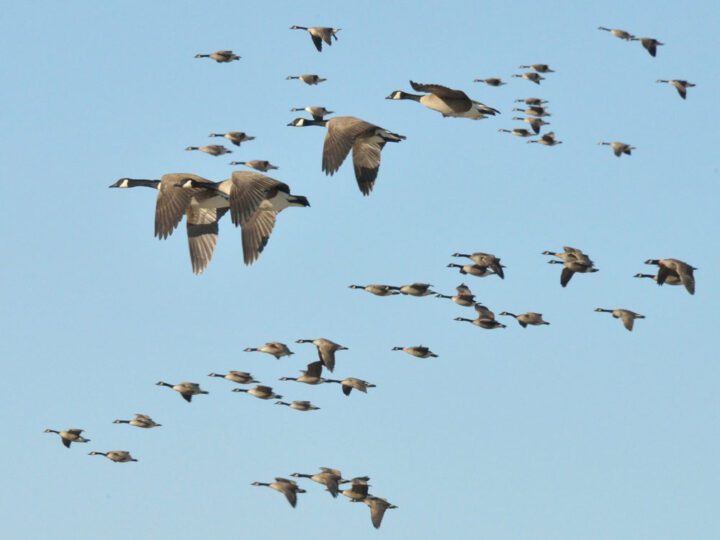Why do migrating Canada Geese sometimes fly in the “wrong” direction?

There are several possibilities, but in fall it’s likely that these are family groups moving around, now that the yearlings can fly, in search of feeding grounds.
Canada Geese raise their young near water, where the goslings can feed and if necessary dive or swim away to escape predators. In late summer the adults temporarily become flightless for several weeks as they molt their wing feathers. Once the young have learned to fly, and the parents have regained their flight, the whole family will take off from their nesting grounds to find more productive feeding areas—and this movement could be in any direction. This happens in the late summer before the massive southward migration as temperatures drop across the continent.
First- and second-year geese (not old enough to breed), along with those that lost nests early in the breeding season also undertake a molt migration. Individuals may move several to hundreds of miles during the late spring and summer to large bodies of water where they will be safer as they molt their wing feathers. In September and October, many of these individuals will be returning from this seasonal journey, and again may be seen flying in almost any direction.
Also, bear in mind that there are increasingly large numbers of resident Canada Geese across North America. These birds do not migrate at all and so you may see them at any time of year flying in any direction. Their numbers have been growing exponentially since the mid-twentieth century and they have begun to be seen as nuisances in some communities. Read more on the difference between migratory and resident Canada Geese.

All About Birds
is a free resource
Available for everyone,
funded by donors like you
American Kestrel by Blair Dudeck / Macaulay Library
